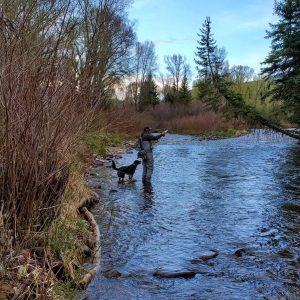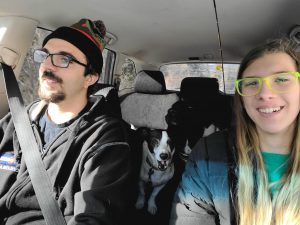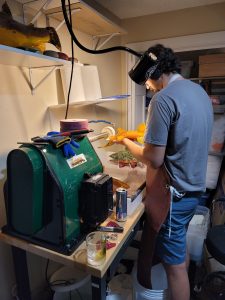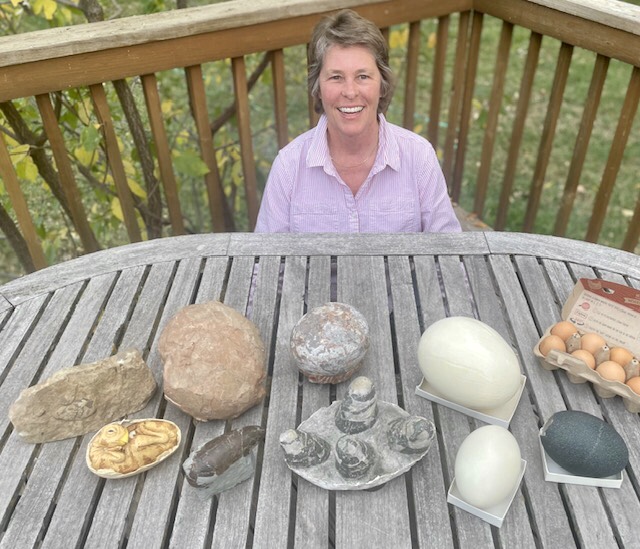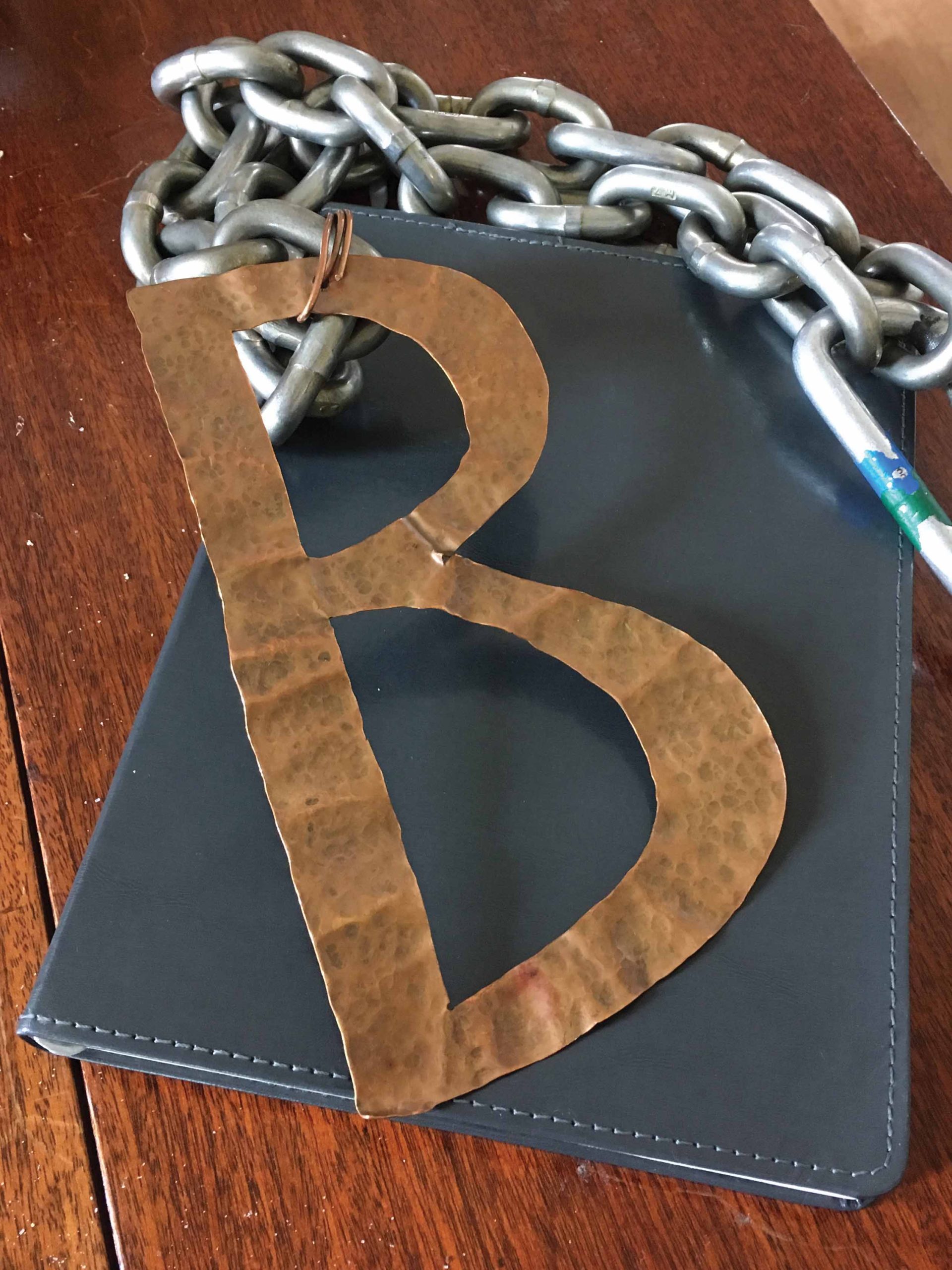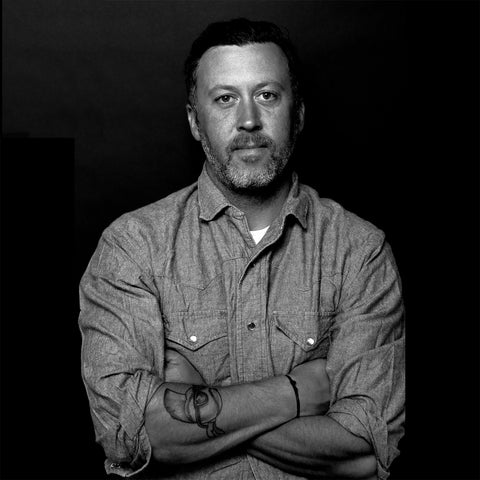Flecks of Sparkle
Ten Years after Graduation, glass artist Martin Gerdin ’11 Finds His Niche
For some, fly fishing is a pastime, something fun to pursue on a long weekend or camping trip with friends and family. For others, it’s a calling, a religion, lionized in the literary creations of Ernest Hemingway and Norman Maclean among many others. Martin Gerdin ’11 clearly falls into the latter category. On any given day, you might see Martin under the renovated Satank bridge casting a line as the sun descends on the valley, dappling the waters of the Roaring Fork River with burnished gold light.
In as much as a connection to the natural world, it’s also the inspiration for his livelihood as a blown glass artist.
Visit the Redstone Gallery, Aspen Emporium, or Harmony Scott galleries and you’ll find blown glass sculptures of rainbow, brown, steelhead, and other species of trout. They usually don’t last long, and both glass collectors and avid fly fishers who call to commission a trout find he has a backlog of custom orders from clients across the country.
Martin’s pieces unleash the fluid elegance of glass. Increasingly, his pieces capture—and arrest—the live-action of trout in flashes of light. “When I look at a trout, I feel that I see something different than most other people. I see hundreds of shades of color, flecks of sparkle, curves, and fins, that all add up to a trout.” His pieces require over 40 tools and more than a week’s worth of time before they’re complete.
Approaching his 10th CRMS class reunion, Martin is building a solid foundation as an emerging glass artist on Colorado’s western slope. And when he’s not on the river or finishing pieces for clients, you can find him working with current CRMS students in glassblowing service crews alongside José Chardiet, a world-renown glass artist who joined the school last year after the retirement of another legendary valley glass artist, Dave Powers ’72. Working with students a decade younger, Martin serves as a link between generations of CRMS creativity.
Gerdin’s journey as a glass artist winds like the rivers he frequents.
Born in Aspen and raised in Old Snowmass, he grew up soaking in all that the Roaring Fork Valley had to offer. Martin’s mother, D.D., is well known to the last 15 years of CRMS graduates as one of the chefs behind the serving line in the Bar Fork. His father, Victor, is a three-term Professional Ski Instructors of America Demo Team Member and Mountain Planner for Aspen Skiing Company. Along with his older sister Theresa, their family thrived in a secluded valley at 8,500 ft elevation.
“I have always been a seeker of wild things,” said Gerdin. “On my parents’ acreage in Snowmass, my dad and I cut countless trails through the woods. We would go on fishing trips to alpine lakes and backpacking even when I was probably too young to come along. I loved seeing wildlife and would patrol the property trying to catch a glimpse of the elusive creatures. Most of all though, my favorite thing to do as a child was creating things. Playdough and shrinky-dinks slowly evolved into clay and papier-mache. Using my hands to make something has proved to be one of the only reliable ways to calm my overactive mind.”
Gerdin came to CRMS after elementary and middle school in Basalt, where his bipolar and ADHD conditions made education a struggle on many levels. He found meaningful engagement right away.
“My first memory of CRMS was Wilderness, of course. I was pretty out-of-shape as an 8th grader, and Wilderness was a stark wake-up call.”
“I couldn’t really believe that this was a high school,” he continued. “Blacksmithing, ceramics, glassblowing, mountain biking, it all seemed surreal. This was a very new experience for me. I already knew how to handle myself in the woods but having a close bond with near-strangers was something I was unfamiliar with. I returned to the Bar Fork after the trip sore but elated. This experience continued as school started. I still dealt with some of the teasing I had become all too used to, but for the first time I felt a part of and not outcast from the community as a whole.”
Before too long, a CRMS alumnus faculty member captured Martin’s imagination.
“One day, after leaving an All School Meeting, I was rooting around that scrap pile behind the forge looking for some iron to use during the coming work crew. I heard classical music coming from what I had previously thought was just a shed. I slid the door open to peek inside, and I’ll never forget what I saw. There was an older man, making clear flowers out of glass. I had never seen hot glass before, and I was memorized. I slipped through the door, and sat on the couch, enthralled by the process.”
“It was the way the glass moved. Liquid but solid, seemingly made of flowing light. And the way the man seemed to dance with the material. Each move it made, he made an equally fluid move to match it. It was a dance, a dance of fire and color. That man was Dave Powers. Eventually, he noticed me and gave me his characteristic grin. That was in the first month of my freshman year. Following that day, I snuck over to the glass studio every chance I got. I wanted to watch, learn, absorb information. After several months of this, Dave got me into the work crew.”
Over time, Martin found his center in exploring glass but continued to struggle throughout his CRMS experience with the whipsaw effects of bipolar and ADHD symptoms. Certain faculty like Dave Powers and Kayo Ogilby were able to make a connection that impacted Martin.
“Due to my abnormal brain functioning, most of the teachers had no idea what to do with me or how to handle me. I have always had a nearly unlimited supply of energy, and Kayo figured out how to direct it rather than suppress it. This is the reason I take such an interest today in students that struggle in a similar way. I try to set up boundaries and try to direct their energy into creativity, process, and assisting others. Michael Hayes’s mountain bike active was also very important to me. Michael Hayes always pushed me to perform the best I could, and by my junior year I was in amazing physical condition.”
Graduation in 2011, together with his growing talent in glasswork, saw Gerdin accepted to Jacksonville University on scholarship. Yet his mental health conditions, compounded by the freedom to experiment with debilitating substances, confounded his artistic dreams.
“Anyone with mental health issues, especially something as serious as bipolar disorder, can tell you that drugs and alcohol don’t mix well with already unstable brain chemistry. I stopped taking my medication freshman year of college, and it did not take long for things to get so bad that I couldn’t handle them.”
Martin returned to Colorado to work while pursuing sobriety. He reconnected with Dave Powers and began assisting him in the glass studio, and this is when he made his first glass trout. Dave helped Martin experiment with shape and structure, and later he met Jose Chardiet, who pushed Martin to refine his form and explore using cold glass techniques to realize his vision of a more natural-looking trout. Yet Martin relapsed after a few years and returned to treatment. “In December of 2019, I decided enough was enough. I spent a month in a dual diagnosis treatment center, and emerged sober and properly medicated. Since then I have worked on every aspect of myself.”
Gerdin moved into 2020, like most of us, with a lot of personal and professional goals. In some ways, the pandemic—and later the imposing Grizzly Creek Fire that threatened the valley after ravaging Glenwood Canyon last August—proved a crucible from which Martin has emerged transformed, and ready for even more change.
“On one hand, the world seemed to be burning down around our small town in Colorado, and on the other, I have had the best year I can remember. I focused on my mental health more than I ever have this year,” he said.
“I practiced being grounded, working through trauma with professionals, getting my mind and body back into alignment with my spiritual principles, work ethic, and boundaries, and giving back to the community. I met a wonderful woman, caught many trout, created many trout, and started to repair many of the broken relationships from my past.”
Gerdin credits his sweetheart, Indigo, as well as Dave, Jose, his family, and the Carbondale sober community among many others for where he is today. “To everyone who is struggling with mental health, and everyone that has a loved one struggling, know there is hope. I climbed out of a pit that seemed as if it was about to swallow me forever, but I didn’t do it alone. We are social creatures, and we owe it to each other to move through this journey as a team.”
Moving into the next iteration of his craft, Gerdin is pushing his technical and creative skills to realize a new series of trout, which he calls Naturalisms, stemming from the philosophical idea that everything arises from natural properties and causes.
“What really fascinates me is capturing the essence of the ebb and flow of the river’s ecosystem,” he explained. He’s completed three “Naturalisms” that reflect this concept, the sculptures featuring jumping trout and trying to shake the hook. He plans more ambitious pieces that capture the moment of spawning, large brown and bull trout hunting smaller fish, and a trout taking a glass mayfly from the water’s surface. So far his latest pieces have been well received in both the art and angling communities. He’s found a niche that no one else seems to be pursuing.
“The true magic of the wilderness, and fly fishing for that matter, is being able to watch the natural world happen. (Right now) the green drake mayfly hatch is in full swing. When I am finished working this evening, I will head to the river. The biggest mayfly hatch of the year whips the trout into a feeding frenzy. They will be breaking the surface all around me on my favorite little island, and it will all be lit by the full moon. Seeing the glossy dark back of a trophy fish break the surface to take an electric green mayfly while the strawberry moon makes the ripples shimmer is nothing short of magical….any fly fisher can tell you this is why we fish. It is not about catching the fish, it is about being connected to such a mystical environment that hides its secrets so well.”
UPDATE: Live in the Seattle area? You can see a special gallery showing of Martin’s latest pieces at Emerald Waters Anglers, July 23, 2021, 6-8 pm.
View and purchase Martin’s work, and follow his creative journey on his website: www.martingerdinglass.com
 MYCRMS
MYCRMS
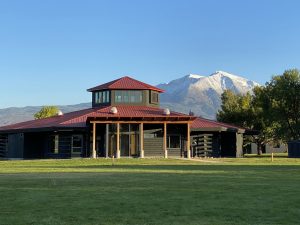
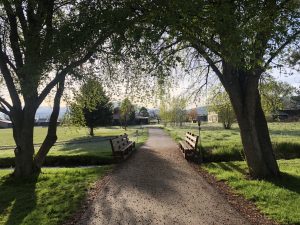
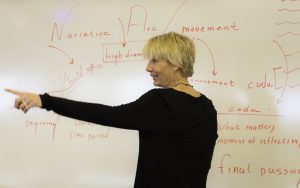
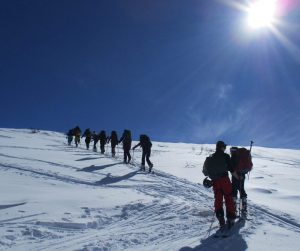
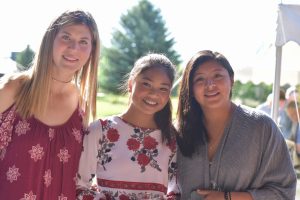
 Virtual Tour
Virtual Tour